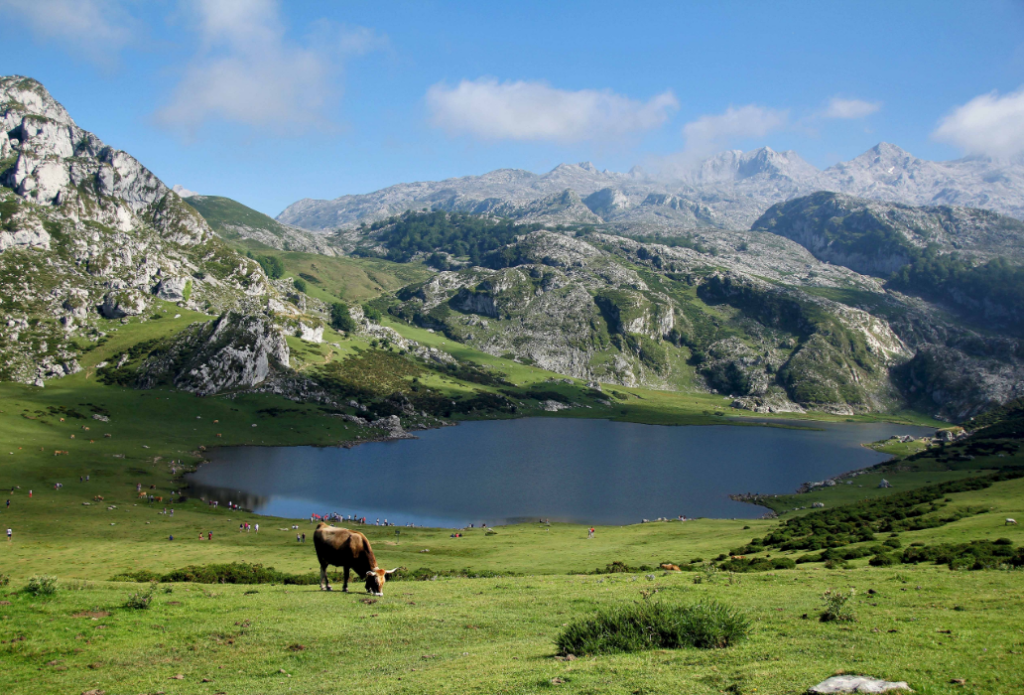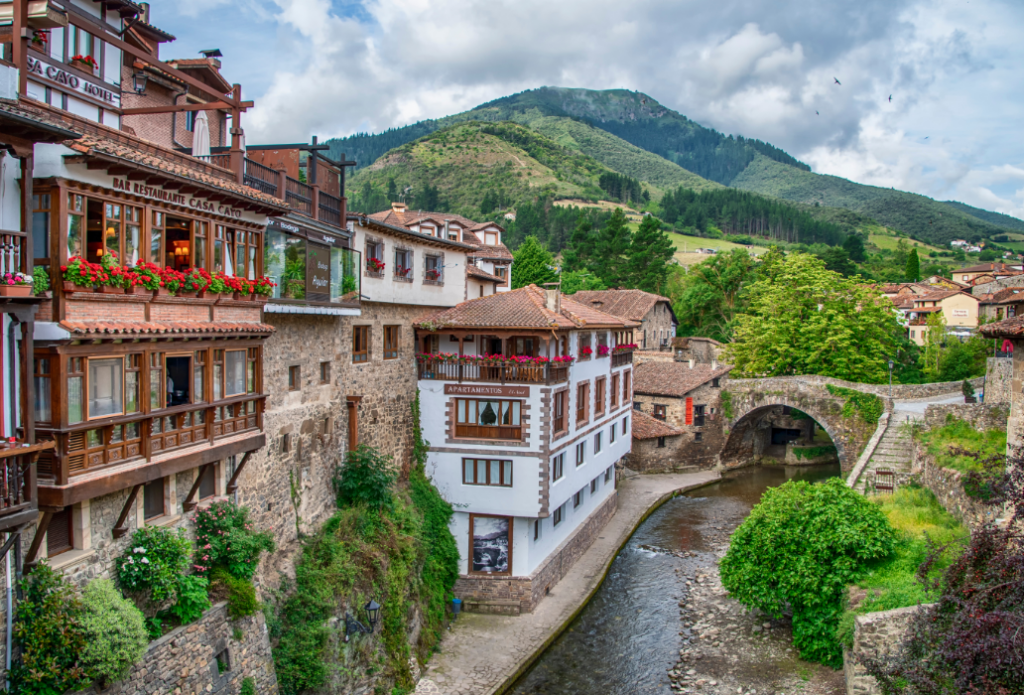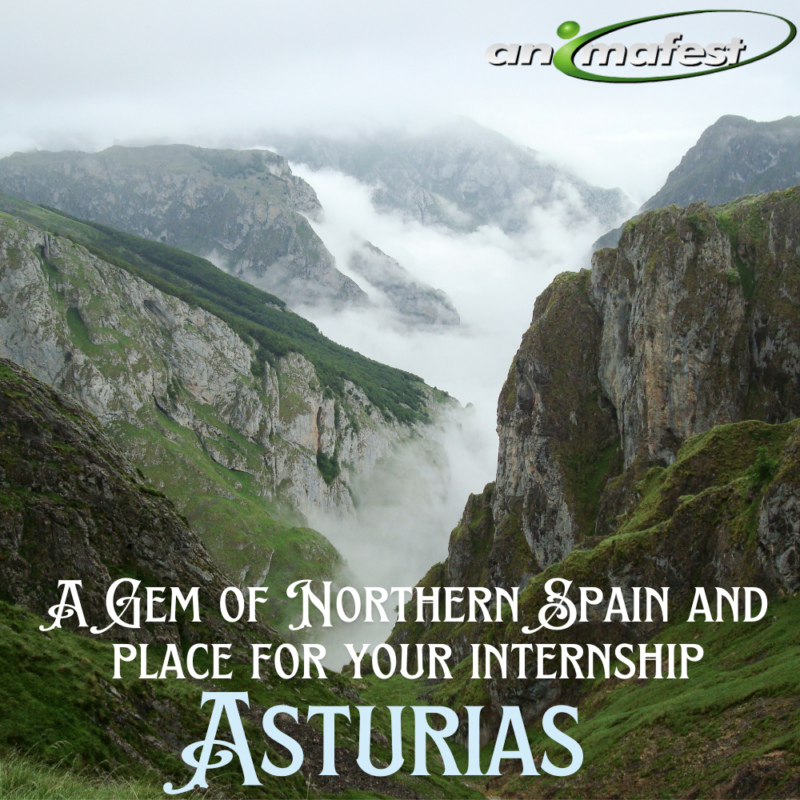Introduction
Asturias, located in northern Spain, is renowned for its lush green landscapes, rugged coastline, and towering mountains. Known as a region of stunning natural beauty, it offers diverse scenery ranging from wild beaches to the dramatic peaks of the Picos de Europa mountain range. Its rich history, culture, and traditions make it a standout destination in Spain.
At Animafest, we are excited to introduce our internship in Spain. This internship programme is designed to offer participants a unique opportunity to gain hands-on experience and expertise in the hospitality and tourism industry, in key areas such as kitchen, bar and restaurant, reception, and entertainment.

Gastronomy
- Culinary Tradition:
Asturian cuisine is famous for its hearty and flavorful dishes. Fabada Asturiana, a rich bean stew made with pork, is one of the most iconic dishes. Traditional Asturian cider (sidra) is another highlight, typically poured from a height to aerate the drink in a unique ritual that reflects the region’s cider-making heritage.
Festivals
- San Mateo Festival (Oviedo):
Held in September, this festival features lively processions and concerts, drawing visitors from across Spain. - Cider Festival (Nava):
A major celebration of Asturian cider, with tastings and pouring competitions that showcase the region’s pride in its cider-making tradition.
Geography
- Location:
Asturias spans 10,604 km² and is bordered by Galicia to the west, Cantabria to the east, Castile and León to the south, and the Cantabrian Sea to the north. - Landscapes:
From green mountains to rocky coastlines, Asturias is known for its spectacular natural beauty. The Picos de Europa National Park, with its dramatic limestone peaks and diverse wildlife, is one of the most renowned natural areas in Spain.

Major Cities
- Oviedo:
The capital of Asturias, Oviedo is known for its Gothic cathedral, pre-Romanesque churches, and beautifully preserved historic center. It is also a vibrant cultural hub with numerous festivals and events. - Gijón:
A bustling port city, Gijón features sandy beaches, a marina, and museums such as the Roman city museum at Campa Torres. The city is lively and famous for its cultural festivals. - Avilés:
Avilés is known for its picturesque old town and the modern Niemeyer Cultural Center, a striking contemporary complex. It combines history with cutting-edge architecture, offering a mix of tradition and innovation.
Economy
Asturias has a diversified economy, with key sectors including:
- Services: The largest sector, focused on tourism, retail, and public administration.
- Industry: Asturias has a strong industrial tradition, particularly in steel production and mining, although recent efforts have focused on modernizing the sector.
- Agriculture: Livestock farming and dairy production are vital, particularly in the lush pastures of the region.
- Tourism: Increasingly significant, driven by the region’s natural parks, beaches, and cultural sites.
Most Visited Places
- Gijón:
A vibrant coastal city, Gijón is a popular tourist destination known for San Lorenzo Beach, the historic Cimavilla neighborhood, and the Sea Museum. - Oviedo:
This city is famous for its well-preserved historic center, rich cultural life, and architectural treasures, including pre-Romanesque churches. - Cudillero:
A picturesque fishing village, Cudillero is known for its colorful houses, narrow streets, and lively harbor, offering magnificent views from the surrounding hills. - Lastres:
A seaside village famous for its traditional houses and stunning landscapes. It gained fame through the Spanish TV series Doctor Mateo. - Somiedo Natural Park:
A haven for wildlife, particularly Cantabrian brown bears, Somiedo is ideal for nature lovers and hikers. Its mountainous landscapes, glacial lakes, and quaint villages are perfect for exploration.

Densest Residential Areas
- Oviedo:
With a population of about 220,000, Oviedo is the region’s largest city and capital. It is a bustling administrative and cultural center with a lively historic core. - Siero:
Siero, home to around 50,000 residents, is a dynamic area known for its proximity to Oviedo and Gijón. Pola de Siero, the main town, is a commercial hub with high population density. - Mieres:
Located in the Nalón Valley, Mieres has approximately 40,000 inhabitants and is known for its industrial history. Its densely populated neighborhoods like Mieres del Camino and La Peña reflect the region’s industrial past.
Tourist Attractions
- Natural Sites:
Asturias is famed for its natural attractions, such as the Picos de Europa National Park, with its soaring peaks and rich biodiversity. Other notable landscapes include the Bardenas Reales Desert. - Historical Heritage:
Key historical sites include Covadonga, a place of great religious and historical significance, and numerous pre-Romanesque monuments that reflect the region’s deep-rooted cultural legacy.
Conclusion
Asturias is a region of contrasts, where wild nature and historical richness blend harmoniously. With its dramatic mountains, hidden beaches, and vibrant cultural heritage, Asturias is an essential destination for lovers of nature, history, and gastronomy. This northern Spanish region offers a unique and authentic experience, making it one of Spain’s most treasured regions. So join us now in Animafest to have the possibility of exploring it all yourself.


